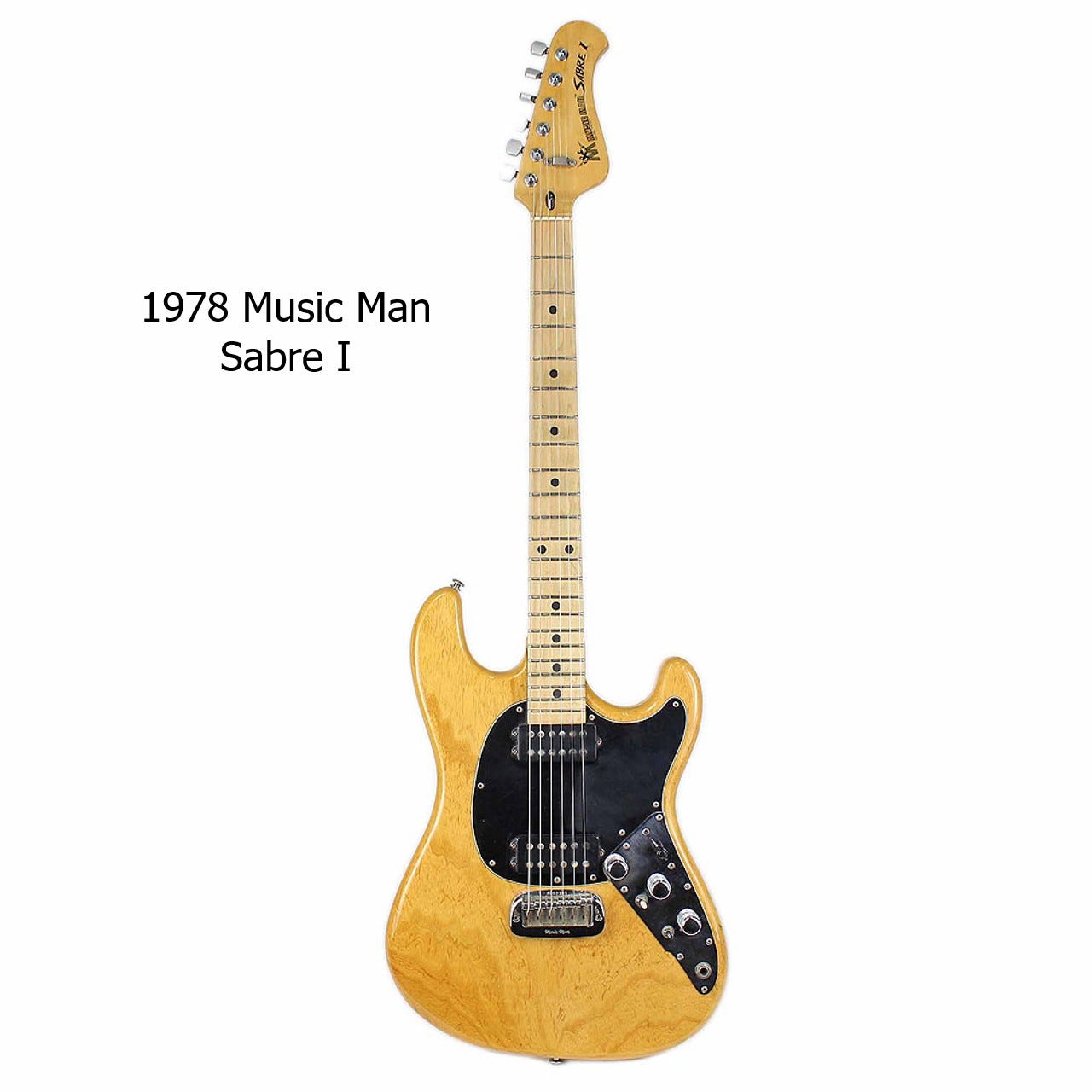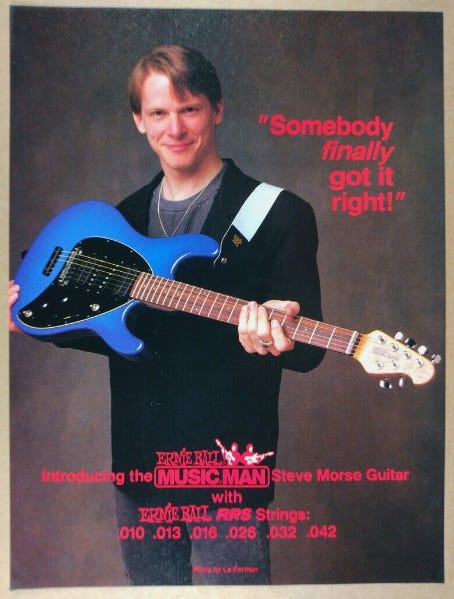Guitar Gavel Lick Of The Week with Stevie K - Ascending/Descending Arpeggio in C Major
Stevie K provides the foundation and some useful suggestions, but you get to take it from here and make it your own. Enjoy!
In 1971 two former Fender employees, Forrest White and Tom Walker had a conversation with Leo Fender about helping finance their guitar/amp company. He did, and Music Man was formed in 1974 using Leo’s (CLF Research) production facility. CLF produced the guitars and basses for Music Man, while White and Walker’s division built the amplifiers in a separate warehouse.
That deal eventually went south over quality control issues and Leo parted ways with Music Man in 1979 to start G&L Musical Products Inc. During Leo’s tenure at Music Man they only produced two electric six-string guitars; the StingRay 1 in 1976 and Sabre in 1978 (each had a bass guitar companion).
After the severed relationship Grover Jackson took the leftover parts, plus some manufacturing of bodies, and kept Music Man limping along until 1984.
On the edge of bankruptcy, Music Man was sold to Ernie Ball the same year. In actuality, there wasn’t much left to purchase other than the trademarks so the new owners started working fast to build a factory.
At that time Ernie Ball was mostly known as a guitar string manufacturer. However, Ernie has a few other claims to fame. One being he was the first retail shop in the U.S. to sell only guitars (and accessories) opening his store in 1958 in Tarzana, CA. Ernie was also one of the first Fender endorsed guitar players, having met Leo in 1953 and becoming an endorsed artist the same year. They quickly became close friends and it’s likely Ernie was very well acquainted with other key Fender employees which plays out as the story progresses.
It was at his music store he learned from L.A. based musicians they needed better electric guitar strings and in 1962 Ernie introduced Slinky strings.
Another claim to fame was his Earthwood acoustic bass line that existed from 1972-1985 earning Ernie credit for producing the first modern acoustic bass. George Fullerton collaborated with Ernie Ball to help design the acoustic bass. Fullerton was one of the original Fender employees, starting work at the company in February of 1948. He went on to be one of the co-founders of G&L (George & Leo) along with ex-fender employee Dale Hyatt.
Tying all of these loose ends together, a bunch of former Fender guys who had worked together for decades, had a big falling out. Ernie knew the entire cast of characters and his son Sterling, who had been running the company since 1974, saw a great opportunity to turn the defunct Music Man company into something big.
So Sterling set out to reestablish the business as Ernie Ball Music Man, introducing the flagship Silhouette model at the 1985 NAMM show in New Orleans. (Shipping began in 1986)
The Silhouette was developed by lead designer Dudley Gimpel and Sterling, with input from guitarist Albert Lee and is known for having a modular electronics design. The universal pickup routing allowed for interchangeable pickguards that could accommodate most any pickup configurations (HH, SSS, HSS, HSH).
From the 1987 Ernie Ball Music Man catalog:
"Four different pickup assemblies are available factory mounted to their pick- guards. All have total shielding—pickguard with aluminum lining plus nickel coated body cavity. Molex connectors allow a guitarist to change his sound in a matter of minutes, and without a soldering iron. String removal is not necessary, just loosen them. The music dealer can rapidly combine any of the pickup assemblies with body color or neck, thereby satisfying the needs of any customer."
Another distinct design feature was the 4x2 headstock design and 6-bolt neck attachment. The body and fretboard material had a few different options. Pickups were custom wound DiMarzio’s with a Schaller bridge.
Guitar Gavel Lick Of The Week with Marc Stamco - DADF#AD
It's not your 7th grade report card... or was it? (Maybe just me :-)How about a supercharged D chord, and an F# for tension? Get after it!





